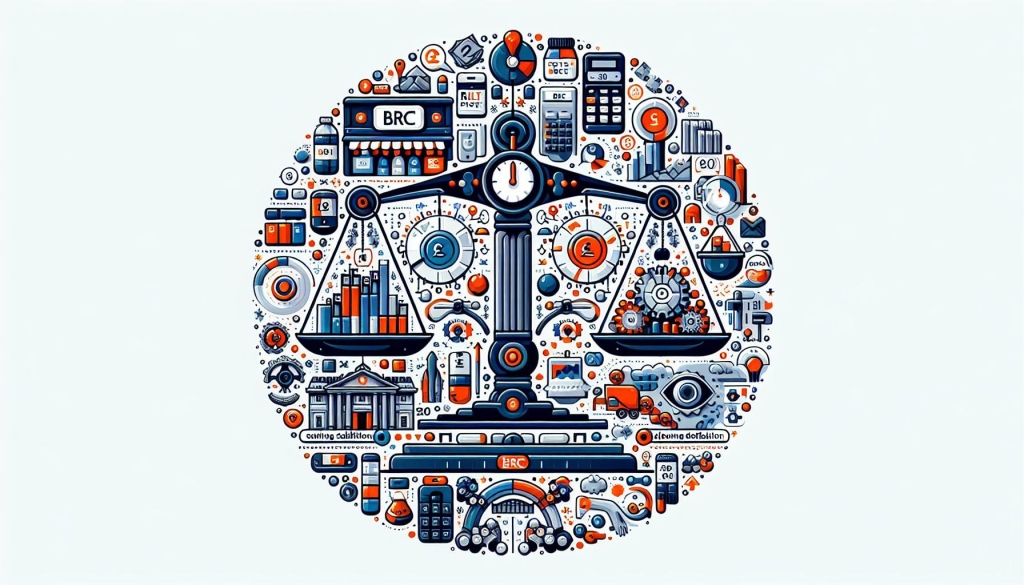Meta Title: UK Retail Prices Stabilize in November: BRC Report on Deflation Trends
Meta Description: Discover the latest insights from the British Retail Consortium on UK shop price deflation slowing down in November, with details on food prices and future implications for consumers.
Introduction
In a notable shift within the UK’s retail landscape, the British Retail Consortium (BRC) recently reported a slowdown in shop price deflation for November 2023. This development is crucial for both consumers and investors alike, indicating potential changes in spending patterns and price pressures. As the report revealed, UK shop prices experienced a decline of just 0.6% year-on-year, a deceleration from October’s sharper drop of 0.8%. Furthermore, food prices also showed signs of stabilization, with food inflation softening to 1.8% from 1.9% in October.
In this article, we will delve into these trends, their implications, and what consumers and investors should be aware of moving forward.
The Current State of UK Retail Prices
Overview of Price Movement
The BRC’s shop price index serves as a vital gauge of the retail sector, reflecting how pricing dynamics affect consumers. Here’s a quick breakdown of the latest data:
- November Shop Price Index Drop: 0.6%
- October Shop Price Index Drop: 0.8%
- Food Price Inflation in November: 1.8%
- Food Price Inflation in October: 1.9%
These statistics suggest that while deflation in retail prices persists, the trend is weakening, indicating that consumers may face increasing price pressures in the upcoming months.
What Does This Mean for Consumers?
Slowed deflation may not seem alarming at first glance, but it is essential to examine its implications. Here’s how this trend could impact shoppers:
- Budgeting Challenges: As shop prices stabilize and inflation hovers, consumers will need to reassess their budgets and spending habits.
- Increased Costs in Essentials: With food inflation still positive, essential goods are becoming progressively more expensive, driving a wedge into the disposable income of many households.
- Changes in Buying Behavior: As consumers anticipate rising prices, there may be a shift towards bulk buying or prioritizing sales and discounts.
Implications for Retailers and Investors
For retailers, the slowing rate of deflation brings both challenges and opportunities. Here are some implications they should consider:
- Pricing Strategies: Retailers may need to adjust their pricing strategies to account for reduced deflation. This could mean raising prices on certain items to maintain margins.
- Consumer Sentiment Monitoring: Understanding consumer sentiment will become more critical as price pressures mount.
- Investment in Efficient Supply Chains: To mitigate the impact of fluctuating prices, retailers might want to invest in more efficient supply chains and better inventory management practices.
For investors, the stabilizing retail prices could signify potential opportunities within the retail sector:
- Strategic Investments: Understanding shifts in consumer behavior can help pinpoint companies with robust business models.
- Market Resilience: As the retail market adapts to these new pricing dynamics, savvy investors will be watching for brands that can leverage their pricing strategies effectively.
Analyzing the Factors Impacting Price Deflation
Global Economic Influence
The slowdown in deflation isn’t isolated; rather, it reflects broader economic trends. Factors such as:
- Global Supply Chain Disruptions: Ongoing issues from the pandemic and geopolitical tensions may be affecting merchandise prices.
- Rising Utilities and Wage Costs: Operating costs for retailers are also rising, compelling them to pass increased expenses onto consumers.
The Role of Seasonal Trends
Retail trends are often seasonal:
- Holiday Shopping Season: The approach of the holiday season can lead to price fluctuations as retailers aim to attract shoppers with promotions.
- Consumer Demand: A resurgence in consumer demand following the pandemic has the potential to influence price stability.
Benefits and Practical Tips for Shoppers
As consumers navigate these changing dynamics, here are some valuable tips to consider:
- Stay Informed: Keep an eye on BRC reports and other economic indicators to stay ahead of price trends.
- Plan Shopping Wisely: Shop during sales or when discounts are offered, especially for non-perishable goods.
- Bulk Buying Strategies: Consider stocking up on essential items to counteract potential price increases.
- Explore Alternatives: Be open to different brands or generic products that may offer comparable quality at a lower price.
Case Studies: Reader Experiences
To provide a better insight into the implications of these trends on everyday shoppers, we compiled a few real-life experiences.
Case Study 1: Maria’s Grocery Shopping
Maria, a mother of two, has noticed an increase in her monthly grocery expenses due to rising food prices. After reviewing her spending habits, she started purchasing pantry staples in bulk during sales to save costs, which helped her budget better for other essentials.
Case Study 2: Alex’s Holiday Planning
Alex, a savvy shopper, began his holiday shopping early. By bustling through clearance sales in October, he capitalized on lower prices before the expected holiday price hikes. His proactive approach allowed him to maintain his holiday budget effectively.
Conclusion
The latest BRC report signaling a slowdown in retail price deflation highlights a crucial moment in the UK retail sector. While shop prices still reflect an overall decline, the deceleration suggests that consumers should brace for rising price pressures ahead.
Both shoppers and investors need to keep a close eye on these developments as they adapt to the evolving economic landscape. By staying informed and adjusting strategies based on the insights shared, individuals can better navigate the complexities of the retail market.
As we move forward, it will be essential for stakeholders—be it consumers looking to stretch their budgets or investors seeking opportunities—to remain agile in the face of these changing dynamics. Keeping abreast of trends and employing strategic thinking will certainly aid in making informed financial decisions in the UK retail market.
Call to Action
Stay tuned for our future articles that will explore similar trends and provide actionable insights to enhance your financial acumen.







